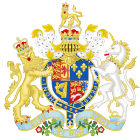Sheriffs (Scotland) Act 1747 facts for kids
| Act of Parliament | |

|
|
| Long title | An Act for the more effectual Trial and Punishment of High Treason and Misprision of High Treason, in the Highlands of Scotland; and for abrogating the Practice of taking down the Evidence in Writing in certain Criminal Prosecutions ; and for making some further Regulations relating to Sheriffs Depute and Stewarts Depute, and their Substitutes; and for other Purposes therein mentioned |
|---|---|
| Citation | 21 Geo. 2. c. 19 |
| Territorial extent | Scotland |
| Dates | |
| Royal assent | 1748 |
| Commencement | 1 April 1748 |
| Text of statute as originally enacted | |
| Treason Act 1760 | |
|---|---|
| Act of Parliament | |

|
|
| Citation | 33 Geo. 2. c. 26 |
The Sheriffs (Scotland) Act 1747 (21 Geo. 2. c. 19) was an Act of the Parliament of Great Britain which applied only to Scotland. It stated that anyone who was prosecuted on or after 1 April 1748 for treason or misprision of treason could be tried anywhere in Scotland if the crime had been committed in any of the shires of Dunbartain, Stirling, Perth, Kincardine, Aberdeen, Inverness, Nairn, Cromarty, Argyll, Forfarshire, Banff, Sutherland, Caithness, Elgine, Ross, and Orkney. Normally a crime had to be tried in the shire where it had been committed. The Act also said that in such a trial, the jurors could come from adjoining counties, instead of (as would otherwise be the case) the county where the trial was held.
It also provided that His Majesty's Advocate could move the trial to the High Court of Justiciary, and that peers had the right to be tried by their peers. These provisions expired after seven years, but were later revived again for another seven years in 1760 by another Act, 33 Geo. 2. c. 26.
The act also began the process of grouping the smaller shires into a single sheriffdom, by creating shared sheriffdoms for:
- Fife and Kinross
- Stirling and Clackmannan
- Argyll and Bute
- Elgin and Nairn
- Sutherland and Caithness
- Ross and Cromarty
See also
- Treason Act
- Jurors (Scotland) Act 1745

